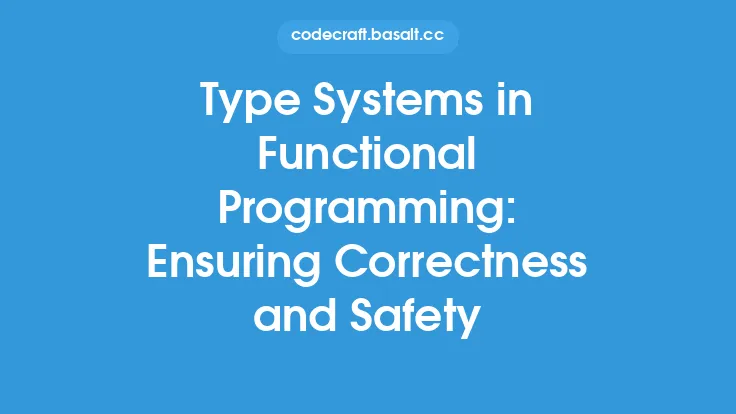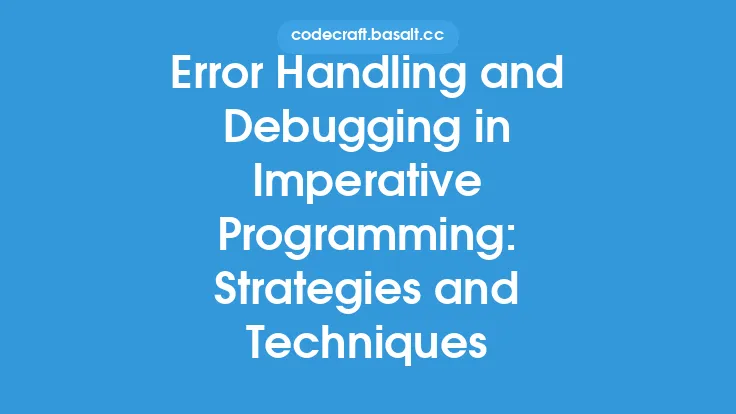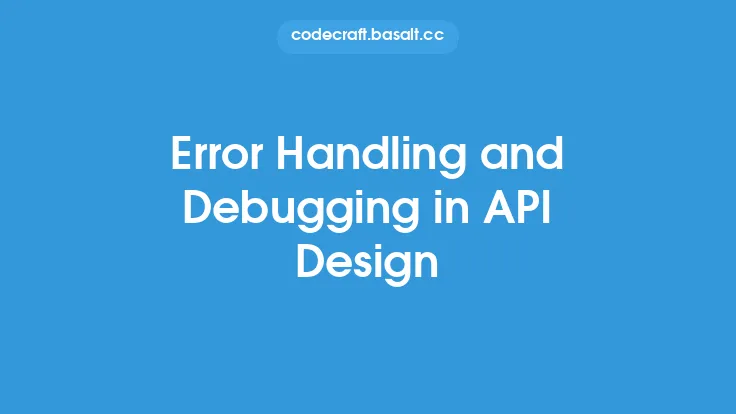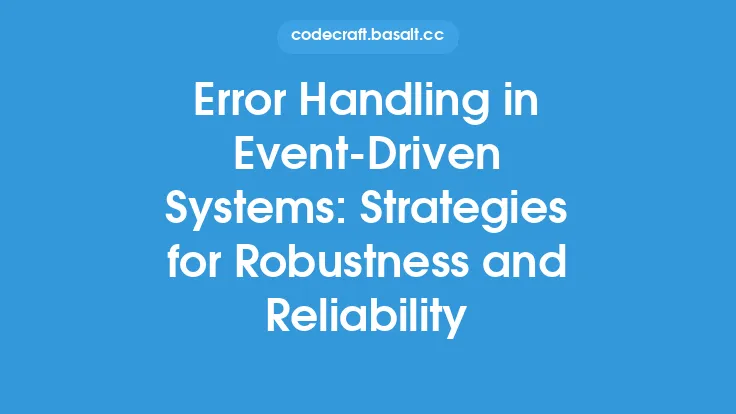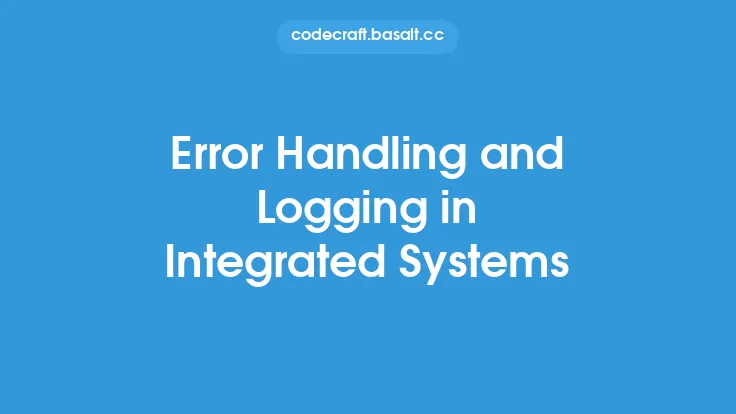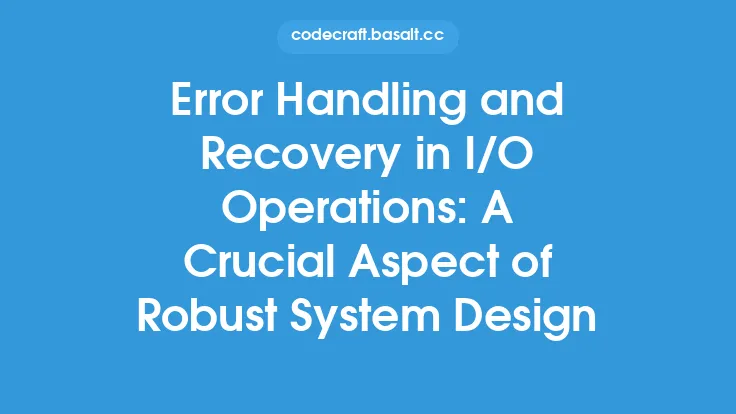Error handling is a crucial aspect of programming, and functional programming is no exception. In functional programming, error handling is often approached differently than in imperative programming. Instead of using try-catch blocks or error codes, functional programming languages often employ specialized data types to handle errors in a more explicit and composable way. Two such data types are the Maybe and Either types, which are the focus of this article.
Introduction to Maybe Type
The Maybe type is a simple yet powerful data type used to represent a value that may or may not be present. It is often used to handle errors that occur when a function is unable to produce a valid result. The Maybe type is typically defined as a sum type with two constructors: Just and Nothing. The Just constructor represents a value that is present, while the Nothing constructor represents the absence of a value. For example, in Haskell, the Maybe type is defined as:
data Maybe a = Nothing | Just a
The Maybe type is useful for handling errors that occur when a function is unable to produce a valid result. For instance, consider a function that attempts to parse a string as an integer. If the string is not a valid integer, the function can return Nothing to indicate that the parsing failed.
Introduction to Either Type
The Either type is another data type used to handle errors in functional programming. It is similar to the Maybe type but provides more information about the error that occurred. The Either type is typically defined as a sum type with two constructors: Left and Right. The Left constructor represents an error value, while the Right constructor represents a valid result. For example, in Haskell, the Either type is defined as:
data Either a b = Left a | Right b
The Either type is useful for handling errors that occur when a function is unable to produce a valid result, and it provides more information about the error than the Maybe type. For instance, consider a function that attempts to parse a string as an integer. If the string is not a valid integer, the function can return a Left value containing an error message, while a valid integer can be returned as a Right value.
Using Maybe and Either Types in Error Handling
The Maybe and Either types can be used in a variety of ways to handle errors in functional programming. One common approach is to use these types as the return type of a function that may fail. For example, a function that attempts to read a file can return a Maybe value, where Nothing represents an error and Just represents the contents of the file. Similarly, a function that attempts to parse a string as an integer can return an Either value, where Left represents an error message and Right represents the parsed integer.
Another approach is to use the Maybe and Either types in combination with other functional programming concepts, such as higher-order functions and function composition. For instance, a function that takes a Maybe value as input can use the maybe function to provide a default value in case the input is Nothing. Similarly, a function that takes an Either value as input can use the either function to handle the error case and the success case separately.
Benefits of Using Maybe and Either Types
Using the Maybe and Either types in error handling provides several benefits. One of the main benefits is that it makes error handling more explicit and composable. By using these types, functions can clearly indicate whether they may fail and what type of error may occur. This makes it easier to compose functions together and handle errors in a centralized way.
Another benefit is that the Maybe and Either types provide a way to handle errors in a more functional way. Instead of using try-catch blocks or error codes, functions can return a value that represents the error, making it easier to handle errors in a pure and compositional way.
Best Practices for Using Maybe and Either Types
When using the Maybe and Either types in error handling, there are several best practices to keep in mind. One of the main best practices is to use these types consistently throughout the codebase. This makes it easier to understand and handle errors in a centralized way.
Another best practice is to use the Maybe and Either types in combination with other functional programming concepts, such as higher-order functions and function composition. This makes it easier to handle errors in a pure and compositional way.
Finally, it is essential to document the error handling behavior of functions that return Maybe or Either values. This makes it easier for other developers to understand how to handle errors when using these functions.
Conclusion
In conclusion, the Maybe and Either types are powerful data types used to handle errors in functional programming. By using these types, functions can clearly indicate whether they may fail and what type of error may occur, making it easier to compose functions together and handle errors in a centralized way. The benefits of using the Maybe and Either types include more explicit and composable error handling, as well as a more functional way of handling errors. By following best practices and using these types consistently throughout the codebase, developers can write more robust and maintainable code.
